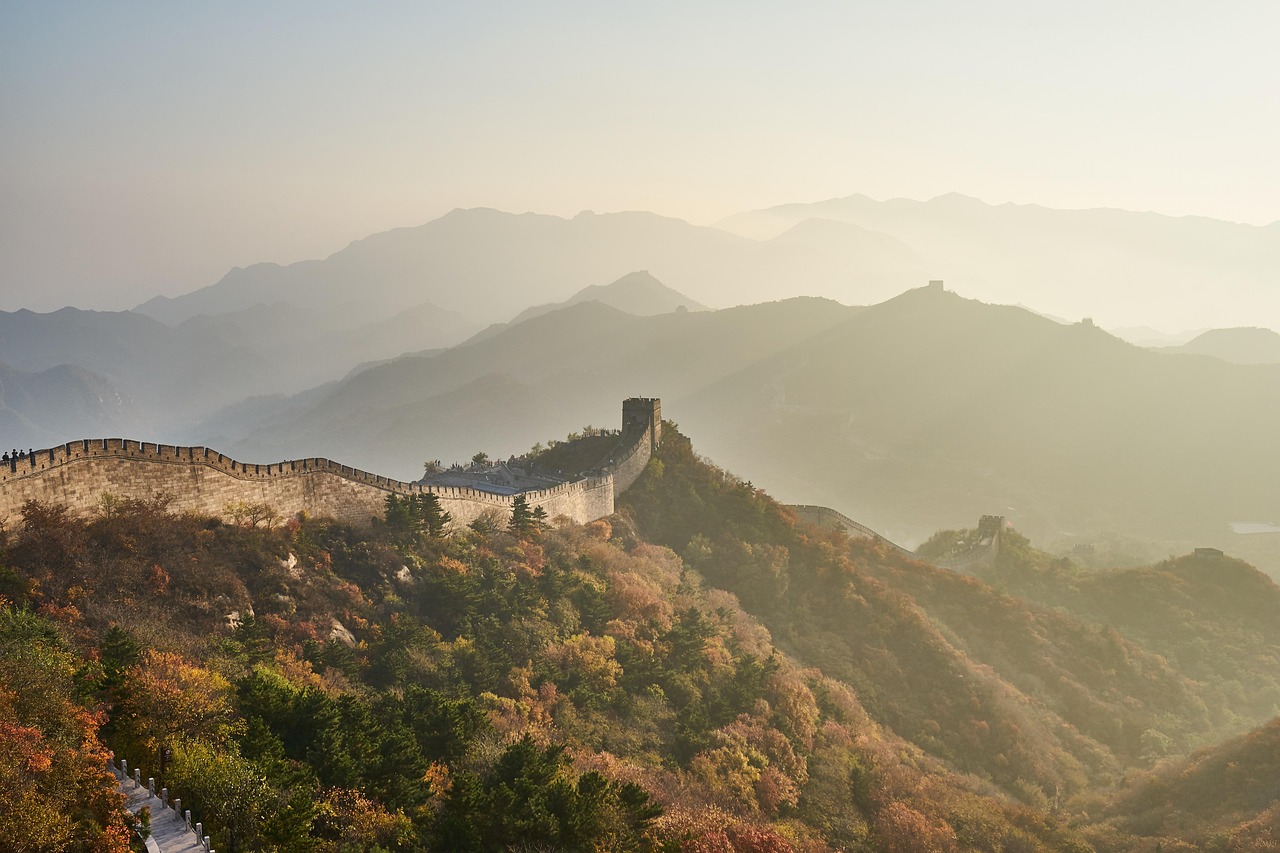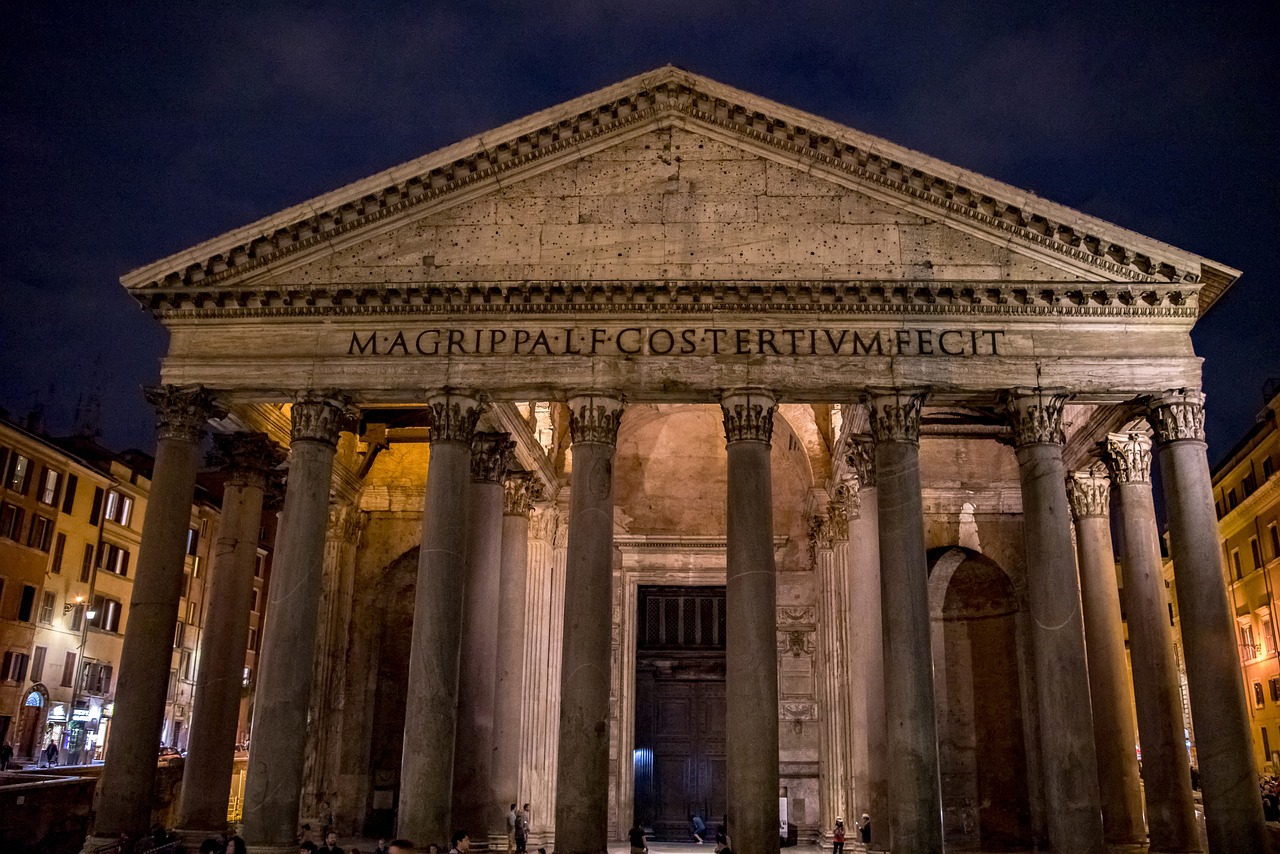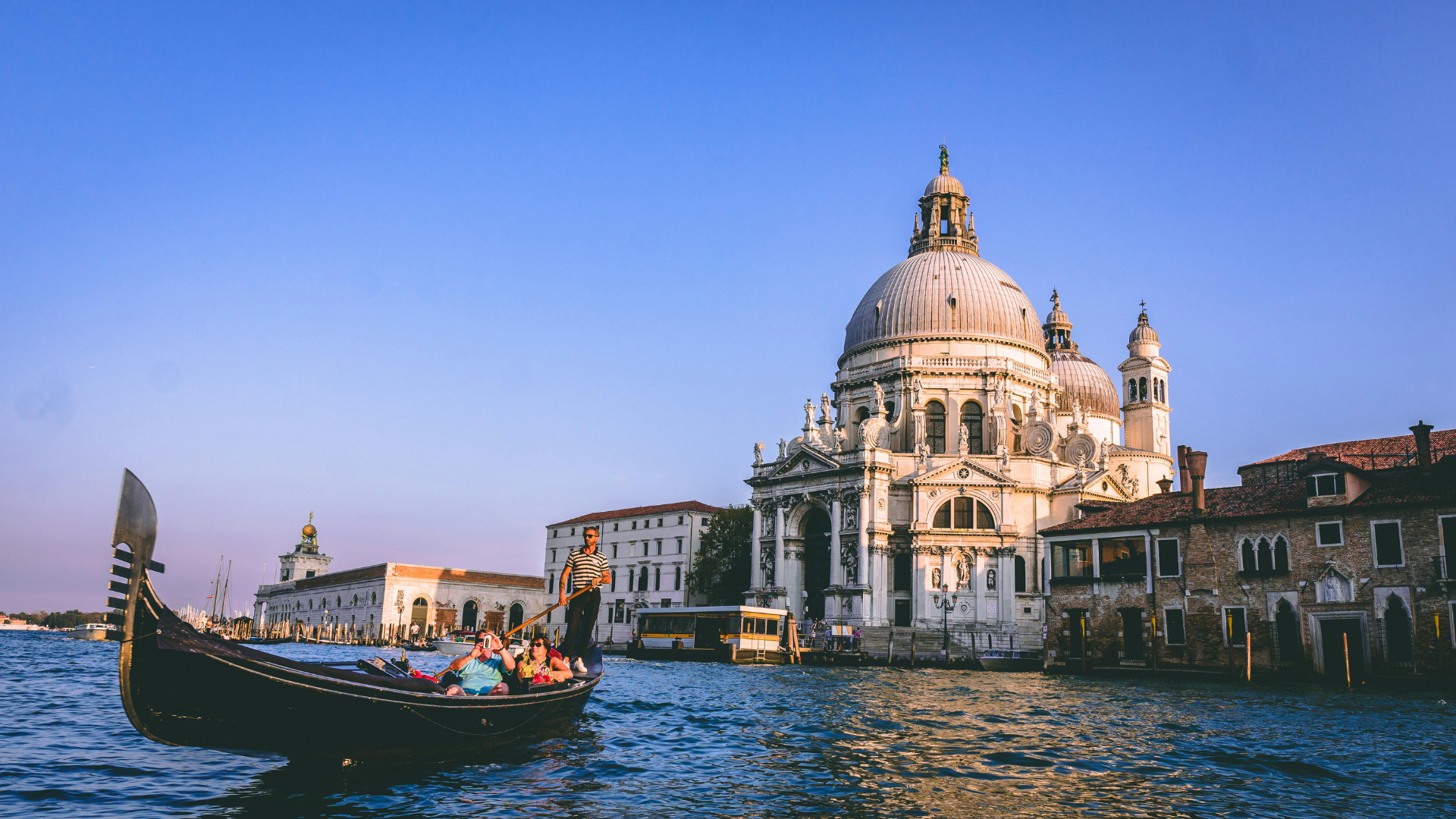History holds a certain allure, a special kind of magic that's hard to resist. It's a magical time machine that transports us back to the grandeur of ancient empires, the bravado of fearless warriors, and the intellect of philosophers who laid the groundwork for our modern world. For history enthusiasts and casual tourists alike, there's an undeniable thrill in standing on the same ground where significant events once unfolded. If you're looking for a journey that transcends time and geography, here is a list of the 20 most historic sites in the world you must visit.
1. The Pyramids of Giza, Egypt
One cannot talk about historical sites without the Pyramids of Giza topping the list. Constructed around 4,500 years ago, these structures are the only one of the Seven Wonders of the Ancient World still intact. The complex includes the Great Pyramid of Khufu, the Pyramid of Khafre, and the Pyramid of Menkaure, alongside the iconic Great Sphinx. The pyramids were built to house temples, tombs, and chapels. Standing before these magnificent structures, you can almost hear the whispers of pharaohs and their ancient civilization.
 Image by Pete Linforth from Pixabay
Image by Pete Linforth from Pixabay
2. Great Wall of China, China
Stretching over 13,000 miles, the Great Wall is a testament to China's rich history and ingenuity. It's an awe-inspiring, imposing fortification designed to protect the Chinese empire from invasions. Despite some sections needing restoration, parts of the wall—like Mutianyu and Badaling—are well-preserved and offer visitors a rewarding hike with breathtaking views.
3. Machu Picchu, Peru
Hidden high in the Andes, the "Lost City of the Incas" is a stone testament to Incan architecture and engineering prowess. Built in the 15th century and rediscovered in 1911, it’s a must-visit for history buffs and nature lovers alike. Both skeletal and material remains suggest that Machu Picchu served as a royal retreat. The reason for the site’s abandonment is also unknown. Hike the Inca trail, explore the ruins, and marvel at how seamlessly the city blends into the stunning landscape.
 Image by Alberto Benini from Pixabay
Image by Alberto Benini from Pixabay
4. Acropolis, Greece
Dominating the skyline of Athens, the Acropolis is a symbol of the Golden Age of Greece. In the 8th century BC, the Acropolis gradually acquired a religious association with the cult of Athena, the city’s patron goddess. This ancient citadel is home to several ancient buildings of great architectural and historic significance, The Parthenon, the Temple of Athena Nike, and the Erechtheion are some major attractions within the Acropolis, the most famous being the Parthenon. It’s an open-air museum that tells a tale of democracy, philosophy, and fine art.
5. Colosseum, Italy
The largest amphitheatre ever built, Rome’s Colosseum is a testament to the grandeur of the Roman Empire. Opened in 80 AD, it was a place of spectacle and sport, where gladiators fought for their lives. Unlike earlier amphitheatres, which were nearly all dug into convenient hillsides for extra support, the Colosseum is a freestanding structure of stone and concrete. It is a magnificent structure that has been able to withstand the tests of time. Today, walking its corridors offers a visceral connection to Rome’s past.
 Image by Sung Rae Kim from Pixabay
Image by Sung Rae Kim from Pixabay
6. Petra, Jordan
Carved directly into vibrant red, white, pink, and sandstone cliffs, the ancient city of Petra was once a bustling trading centre. The name Petra is the Greek work for "rock." The sight of Al-Khazneh ("The Treasury"), appearing at the end of the narrow canyon, is unforgettable. Petra is a testament to the artistry and ambition of the Nabataean civilization. Under Nabataean rule, Petra prospered as a centre of the spice trade that involved China, Egypt, Greece, and India, and the city’s population is believed to have been between 10,000 and 30,000.
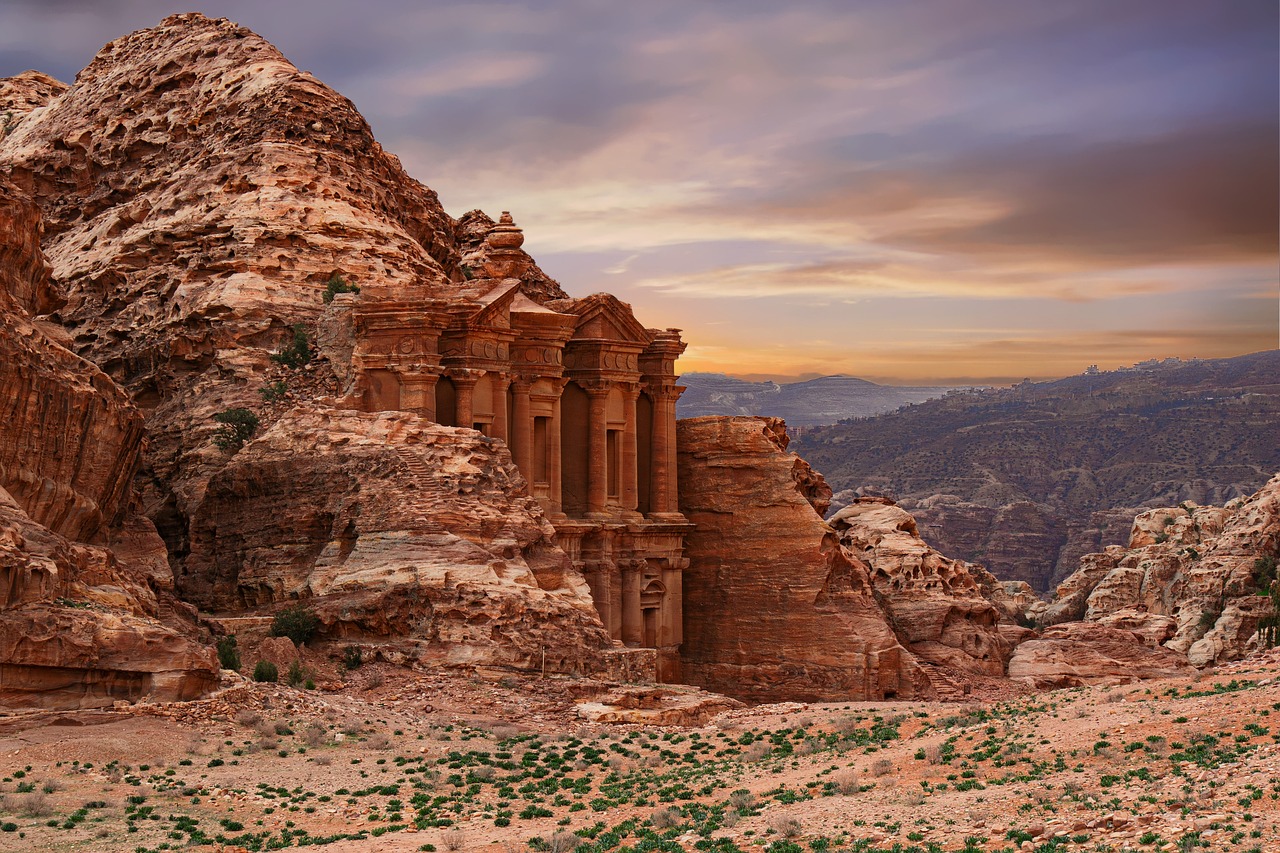 Image by 🌼Christel🌼 from Pixabay
Image by 🌼Christel🌼 from Pixabay
7. Taj Mahal, India
A monument to love, the Taj Mahal is an architectural masterpiece. Built by Emperor Shah Jahan in memory of his wife Mumtaz Mahal, its white marble edifice reflects varying hues at different times of the day, symbolizing the changing moods of a woman. This UNESCO World Heritage Site is a blend of Persian, Islamic, and Indian architectural styles, making it a cross-cultural masterpiece.
8. Angkor Wat, Cambodia
The world’s largest religious monument, Angkor Wat, is a symbol of Cambodia, appearing on its national flag. Originally a Hindu temple dedicated to Vishnu, it was transformed into a Buddhist temple in the 14th century. Walking among the moss-covered ruins at dawn is an experience like no other.
 Image by Poswiecie from Pixabay
Image by Poswiecie from Pixabay
9. Stonehenge, England
The prehistoric monument of Stonehenge, with its massive standing stones arranged in a circular pattern, continues to baffle archaeologists and visitors alike. Stonehenge was constructed about 4,500 years ago at around the same time as the Sphinx and the Great Pyramid of Giza in Egypt. Was it a ceremonial site, a burial ground, an astronomical clock? One theory suggests that Stonehenge may have been used as a solar calendar, with the stones laid out to represent 365.25 days in a year. After all this time, nobody knows for sure. The mysteries only add to the site’s appeal, making it a must-visit in the English countryside.
 Image by Pete Linforth from Pixabay
Image by Pete Linforth from Pixabay
10. The Vatican City, Italy
The world's smallest independent state, Vatican City, is a treasure trove of art and architecture. It houses St. Peter's Basilica, the Sistine Chapel (featuring Michelangelo's famous frescoes), and the Vatican Museums. Beneath the basilica of Saint Peter, reconstructed in the 16th century under the guidance of the most brilliant architects of the Renaissance, remains of the first basilica founded by Constantine still exist, as well as ruins of the circus of Caligula and Nero, and a Roman necropolis of the 1st century AD, where Saint Peter’s tomb is located. The Vatican is directly and materially linked with the history of Christianity. It's an essential stop for any art or history enthusiast.
 Image by JEROME CLARYSSE from Pixabay
Image by JEROME CLARYSSE from Pixabay
11. Chichen Itza, Mexico
A powerful testament to the architectural and astronomical knowledge of the Mayans, Chichen Itza is famous for its pyramid, El Castillo. New discoveries are still being unearthed, providing even more insight into the culture and accomplishments of the Mayan people, who ruled much of present-day Mexico and Central America prior to the arrival of European colonists. During the spring and autumn equinoxes, the setting sun casts a shadow of a serpent creeping down the steps of the pyramid—a must-see event!
 Image by José Andrés Pacheco Cortés from Pixabay
Image by José Andrés Pacheco Cortés from Pixabay
12. The Pyramids of Teotihuacan, Mexico
Known as the "City of the Gods," Teotihuacan features the Pyramid of the Sun, the third-largest pyramid in the world. The site's layout, designed according to celestial alignments, makes it a striking example of pre-Columbian urban planning. It contains around 2,000 single-story apartment compounds, as well as various pyramids, plazas, temples and palaces of nobles and priests. Teotihuacan was founded as early as 400 B.C., though the largest structures of the city weren’t completed until about 300 A.D.
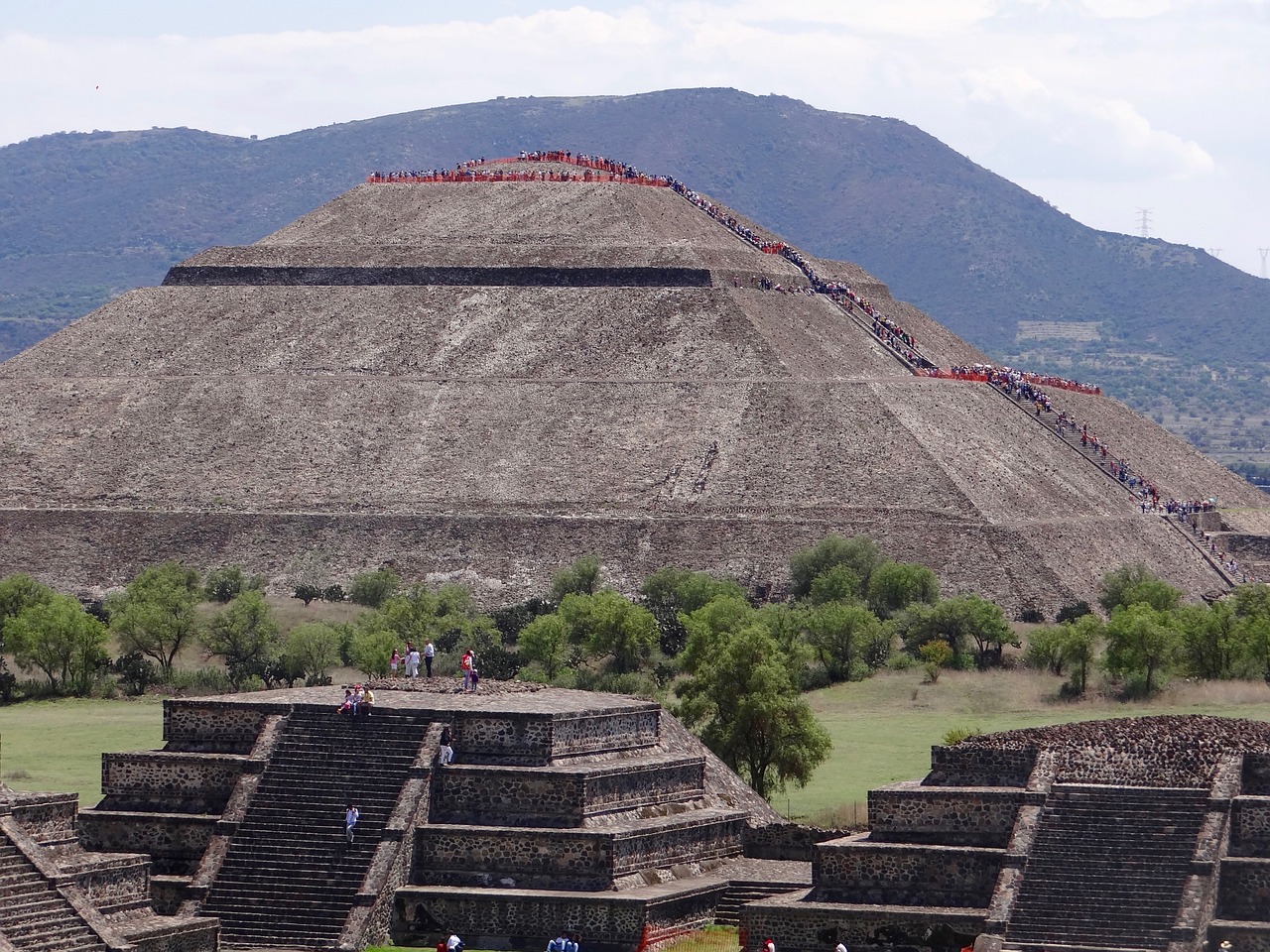 Image by Pau Mondragón from Pixabay
Image by Pau Mondragón from Pixabay
13. The Alhambra, Spain
A jewel of Moorish architecture, the Alhambra is a sprawling palace complex in Granada. It’s the only surviving palatine city of the Islamic Golden Age and a remnant of the Nasrid Dynasty, the last Islamic kingdom in Western Europe. Its beautifully decorated rooms, tranquil courtyards, and meticulously maintained gardens make it an enchanting window into Spain's Muslim past.
 Image by granagramers from Pixabay
Image by granagramers from Pixabay
14. Easter Island, Chile
The remote Easter Island is known for its gigantic stone statues or moai. Erected by the island's early Rapa Nui civilization, these mysterious figures keep silent watch over the island, presenting a striking tableau against the vastness of the Pacific Ocean. Named Easter Island by the Dutch explorer Jacob Roggeveen, who first spied it on Easter Day 1722, it is the most remote inhabited place on earth. Its nearly 1,000 statues, some almost 30 feet tall and weighing as much as 80 tons, are still an enigma, and nobody can know for sure why or how they got there.
 Image by LuisValiente from Pixabay
Image by LuisValiente from Pixabay
15. Palmyra, Syria
The city is mentioned in tablets dating from as early as the 19th century BCE. Known as the "Bride of the Desert," Palmyra was an important city on the Silk Road. The ruins at Palmyra clearly reveal the network plan of the ancient city. In addition, art found on monuments and tombs reflects the influences of the surrounding Roman and Persian empires. While recent conflicts have damaged many of its historic monuments, restoration work is underway, promising to bring back some of its past splendour.
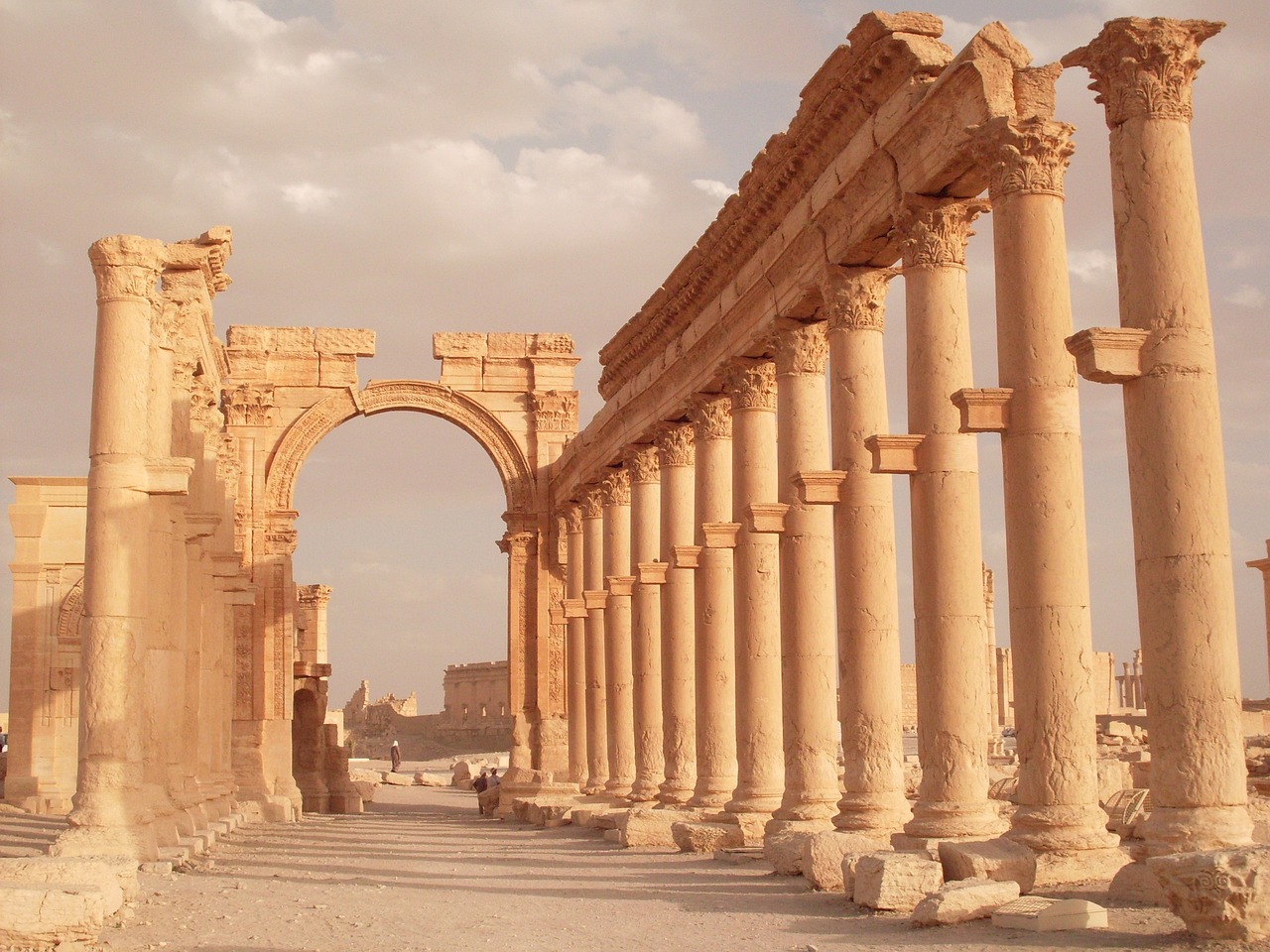 Image by Andrea Lamberti from Pixabay
Image by Andrea Lamberti from Pixabay
16. Hagia Sophia, Turkey
Serving as a cathedral, mosque, and now a museum, Hagia Sophia is a symbol of Istanbul's rich, layered history. Its vast, domed interior is adorned with stunning mosaics and calligraphy, a testament to Byzantine and Ottoman architectural brilliance.
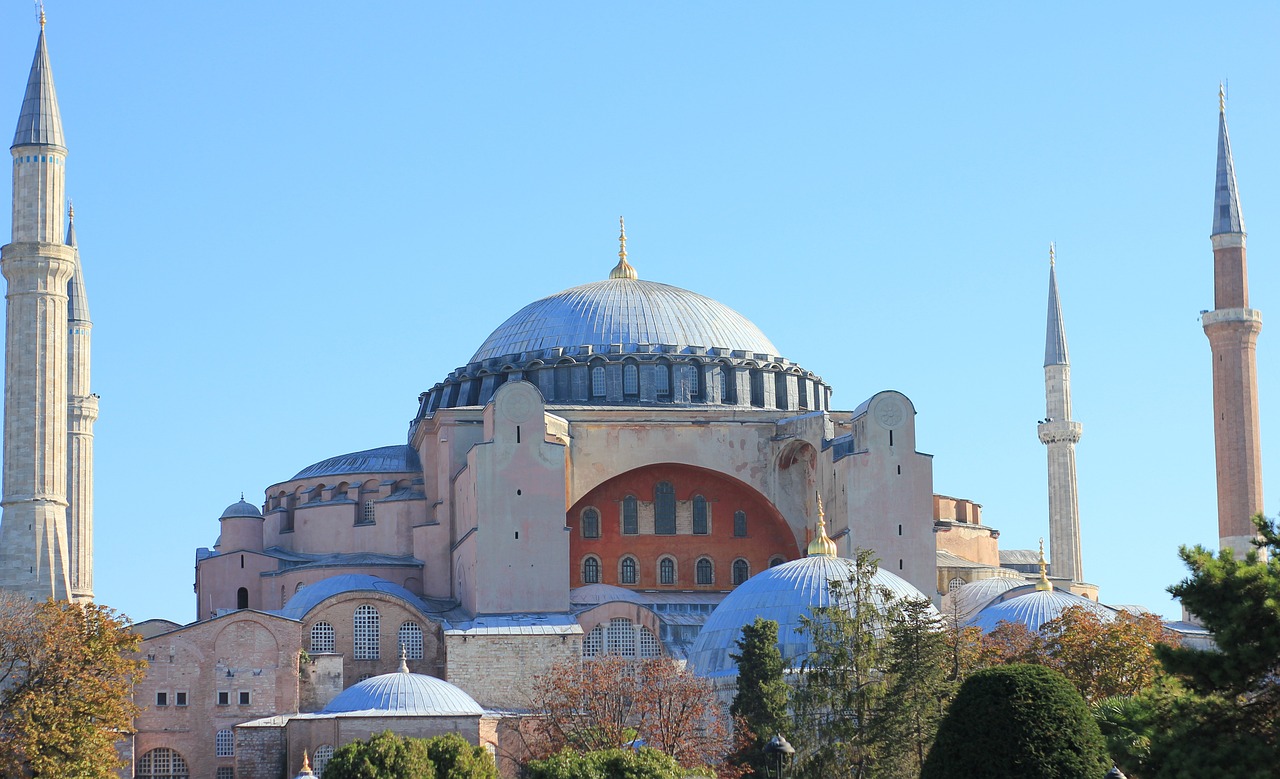 Image by recep toğaçar from Pixabay
Image by recep toğaçar from Pixabay
17. Terracotta Army, China
The Terracotta Army is a collection of thousands of life-sized clay soldiers, horses, and chariots, buried with China's first Emperor, Qin Shi Huang, to accompany him in the afterlife. Each figure is unique, reflecting the diverse individuals who made up his vast empire. The clay figures, once brightly painted with mineral colours, were grouped into a specific military formation consisting of bowmen and crossbowmen, archers, groups of infantrymen and charioteers, and an armoured rear guard. The buried army faces east, poised for battle, ready to protect their chief in the afterlife.
 Image by Christel SAGNIEZ from Pixabay
Image by Christel SAGNIEZ from Pixabay
18. Mont Saint-Michel, France
Mont Saint-Michel is a medieval abbey located on a rocky tidal island. The changing tides dramatically affect the landscape, making it a unique fusion of natural beauty and human architectural achievement. This Benedictine abbey, founded in 966, was erected on a sanctuary dedicated to the Archangel Michel since 708. Mont Saint-Michel is one of the most important sites of medieval Christian civilization.
19. The Pantheon, Italy
A marvel of ancient Roman engineering, the Pantheon is the best-preserved building from ancient Rome. Its dome, the largest unsupported dome in the world, is a testament to the ingenuity of ancient architects. Where it stands, according to legend, was not chosen by chance. It is said to be the place where the founder of Rome, Romulus, at his death was seized by an eagle and taken off into the skies with the Gods. It was originally a small temple dedicated to all Roman gods
20. The City of Pompeii, Italy
Frozen in time by the eruption of Mount Vesuvius in 79 AD, Pompeii offers an unparalleled window into Roman daily life. From preserved bodies to preserved buildings, the once-thriving Roman city is forever frozen at the moment the eruption took place. Walking through the streets of Pompeii is sure to give you a feeling of eeriness. A real-life textbook, the preserved city provides outstanding information on the art, customs, trades and everyday life of the past.
 Image by Graham Hobster from Pixabay
Image by Graham Hobster from Pixabay
From the spectacular engineering feats of the Egyptians and Romans to the deeply spiritual structures in Asia and the mysterious wonders of the Americas, our planet's most historic sites are truly global treasures. They offer a tangible link to our past, whispering stories of bygone eras and lost civilizations. As you stand in their shadow, you're not just seeing stones and artifacts—you're witnessing human history, ambition, and resilience etched into the fabric of time. Each one of these sites is an essential chapter in the grand narrative of human civilization.


